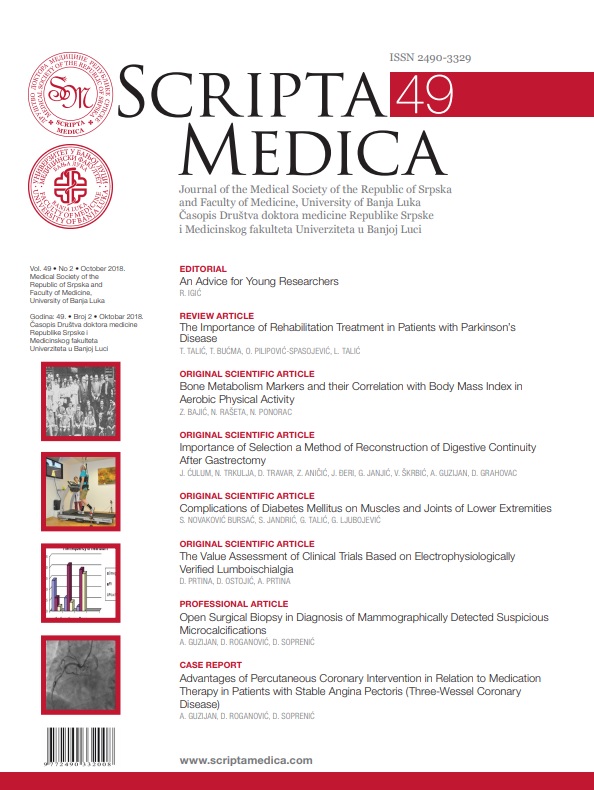The Importance of Rehabilitation Treatment in Patients with Parkinson’s Disease
DOI:
https://doi.org/10.7251/SCMED1802083TAbstract
Parkinson’s disease (PD) is a chronic neurodegenerative disease with a slowly progressive course, having an average duration of about 15 years. It is characterized by akinesia/ bradykinesia, tremor, rigidity and postural instability. For the diagnosis of PD at least two of these four characteristics are required. There is a whole spectrum of non-motor symptoms (mood disorders, different levels of cognitive deficit, sleep disorders, fatigue, autonomic dysfunction). The patomorphologic base of PD is a disorder of the nigrostriatal dopaminergic mechanisms, metabolic damages, structural changes (hydrocephalus, tumors) or degenerative processes of presynaptic nigrostriatal dopaminergic projections or the striatum. Although the pharmacological approach is still essential, more systematic reviews and meta-analysis support the hypothesis on the positive effects of physiotherapy and intensive kinesiotherapy in PD patients. The main rehabilitation method for these patients is kinesiotherapy in its various forms, related to the individual therapeutic target, based on functional limits. Rehabilitation programs contain kinesiotherapeutic procedures for balance, posture, the range of motions- especially rotation of the trunk, strength, elongation, as well as exercise for functionally reduced motion types. The greatest emphasis in the rehabilitation process should be on the re-education of gait, which involves the optimization of initiation, speed, and length of steps. The aim of kinesiotherapy and occupational therapy is to bring the maximum functional independence of the patient and the occurrence of complications to a minimum.
In neurodegenerative disorders, all modalities for improving the gait function are essentially a lifelong activity. Therapeutic strategy comes down to the combination of pharmacotherapy and neurorehabilitation methods.

